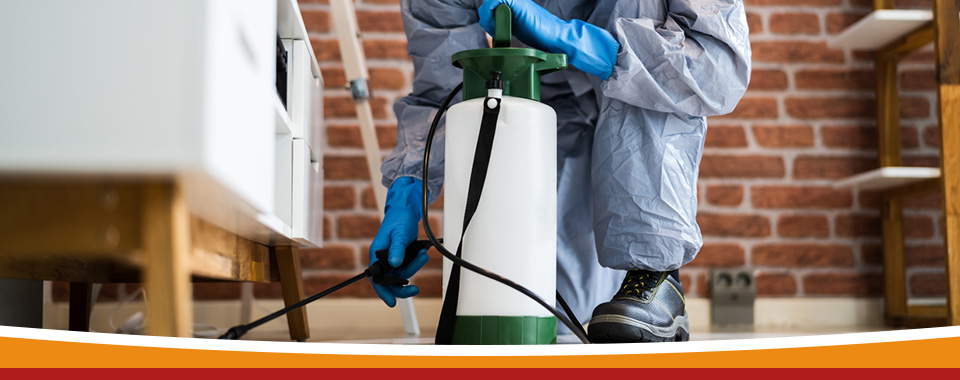Efficient Bed Bug Treatment: Remove Infestations Safely!
Efficient Bed Bug Treatment: Remove Infestations Safely!
Blog Article
Professional Insect Control Techniques for Long-Term Results
Professional insect control techniques envelop a thorough strategy that starts with a comprehensive evaluation and evaluation, complied with by precise pest recognition to recognize their behavior patterns. The application of Integrated Pest Administration (IPM) concepts, combined with eco-conscious treatments, develops the cornerstone of lasting pest eradication.
Examination and Assessment
Upon getting in a building for bug control solutions, the initial action is a comprehensive examination and analysis to identify the degree of the invasion and figure out the most reliable therapy strategy. Specialist pest control specialists are trained to diligently take a look at the properties, looking for indicators of pest task such as droppings, munch marks, nests, or any kind of structural damages. They will also evaluate the conditions that may be drawing in bugs, such as food sources, water leaks, or entrance points.

Insect Identification and Behavior

In addition, comprehending the habits of the recognized insect is vital to applying reliable control steps. For example, knowing where insects nest, what they prey on, and their task patterns can help pest control professionals devise techniques to eradicate them successfully. Some bugs may be nighttime, while others are much more active throughout the day. This knowledge permits the application of treatments at ideal times for optimum effectiveness.
Integrated Parasite Management (IPM)
Integrated Pest Administration (IPM) strategies combine multiple methods to control and protect against parasite problems in a lasting and eco friendly way. pest control near me. By incorporating approaches such as biological control, habitat adjustment, alteration of social methods, and using resistant selections, IPM aims to decrease the usage of chemical pesticides
One of the crucial principles of IPM is the emphasis on prevention. This aggressive technique entails tracking bug populations routinely to identify any kind of prospective concerns prior to they rise. By recognizing pest issues at an early stage, pest control actions can be executed promptly and efficiently.
Furthermore, IPM promotes making use of non-toxic parasite control methods whenever feasible. This can include utilizing natural predators of the pests, presenting helpful pests, or using scents to interfere with breeding patterns. By decreasing reliance on chemical pesticides, IPM not only secures deemak control treatment the atmosphere however also aids maintain an equilibrium in the ecosystem.
Environmentally-Friendly Therapies
Carrying out eco-conscious methods in insect control procedures can efficiently resolve invasions while prioritizing ecological sustainability. Environmentally-friendly therapies concentrate on reducing the effect of pest control approaches on communities, non-target microorganisms, and human health. These approaches usually include making use of all-natural predators, such as ladybugs or nematodes, to manage pest populations, reducing the requirement for chemical interventions. Furthermore, strategies like habitat manipulation, such as adjusting moisture levels or getting rid of food resources, can aid hinder pests without using dangerous substances.
An additional secret aspect of environmentally-friendly therapies is making use of organic and eco-friendly items that damage down swiftly without leaving harmful residues in the setting. Agricultural pesticides stemmed from plants like chrysanthemums or neem supply effective pest control while positioning marginal risk to non-target varieties. Moreover, employing methods like warm therapies or scent catches can target specific insects with precision, reducing the overall environmental impact of pest control practices.
Continuous Tracking and Maintenance
Continual surveillance and upkeep are crucial components of efficient insect control monitoring. Continuous tracking plays a vital role in making certain that pest problems are detected early and dealt with without delay. Routine examinations by experienced experts are needed to determine any indications of insect activity, assess the performance of previous treatments, and make changes to the bug control strategy as required. By checking bug populaces over time, insect control professionals can track patterns, expect possible issues, and other implement preventative measures to lessen the danger of future problems.
Along with monitoring, maintenance techniques are vital for long-lasting insect control success. This consists of executing proper hygiene steps to get rid of potential food and water sources for pests, sealing entry factors to avoid parasites from going into the facilities, and resolving any online pest control services type of architectural issues that might promote pest invasions (pest control near me). By integrating recurring monitoring and maintenance right into an incorporated insect monitoring strategy, organizations can make sure a pest-free environment and guard their residential property versus costly damage and health dangers
Verdict
In final thought, utilizing expert bug control techniques such as comprehensive examination and analysis, precise bug recognition and understanding of their habits, integrated bug administration strategies, environmentally-friendly treatments, and recurring monitoring and upkeep are important for accomplishing lasting cause insect control. By carrying out these methods, people can efficiently handle insect infestations and maintain a pest-free setting in a lasting fashion.
Report this page